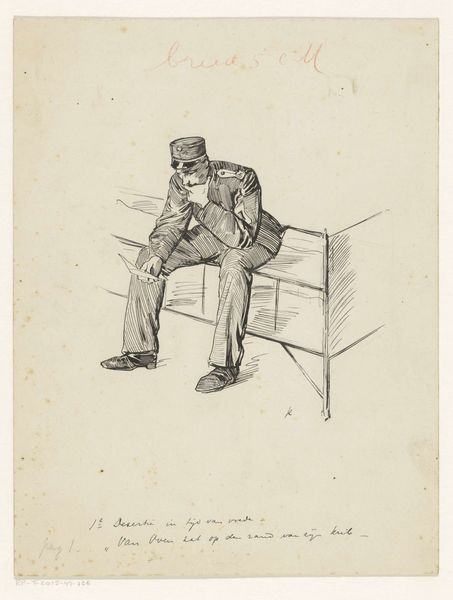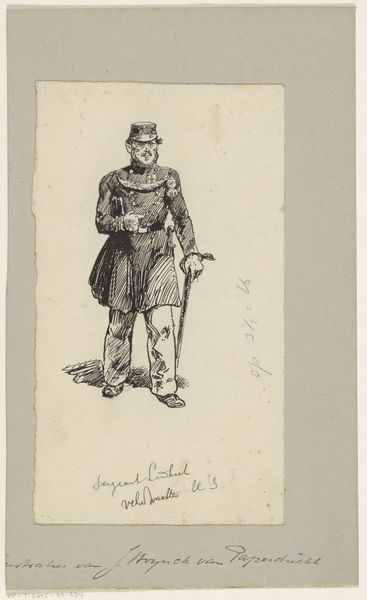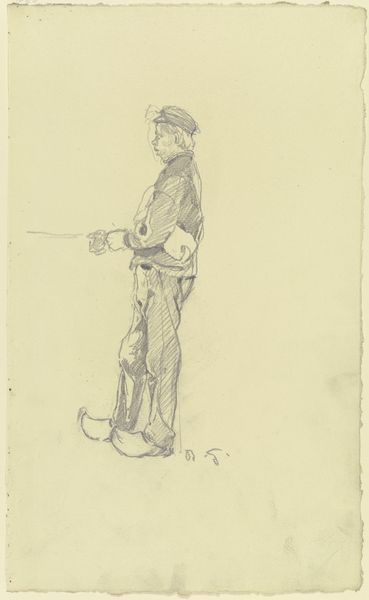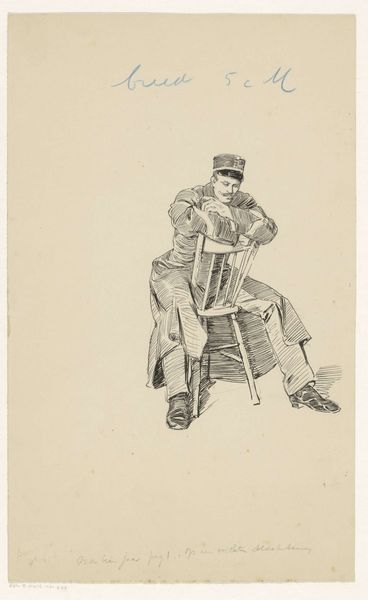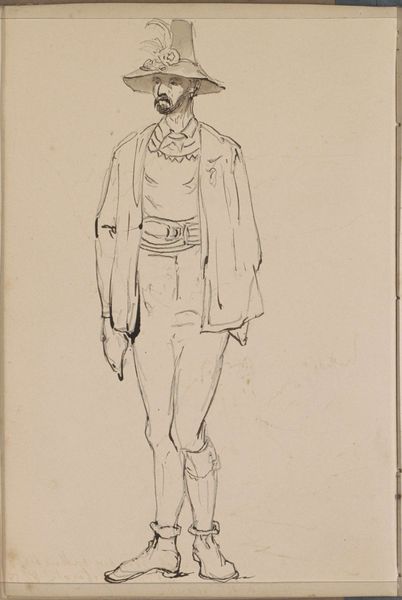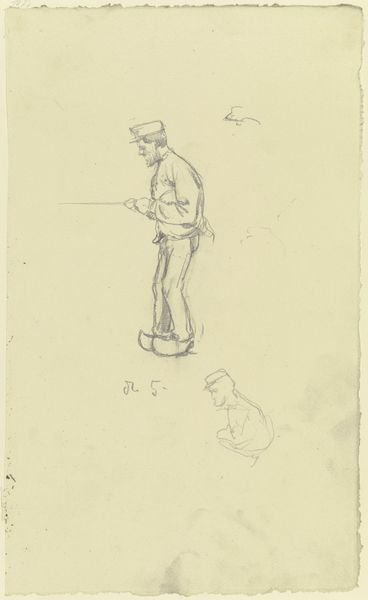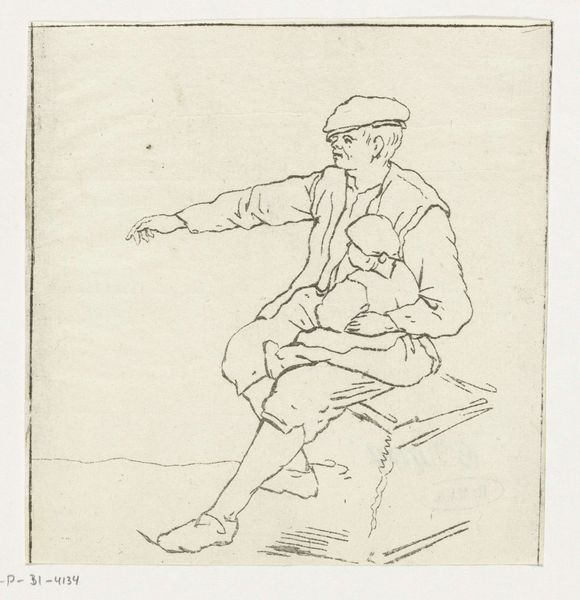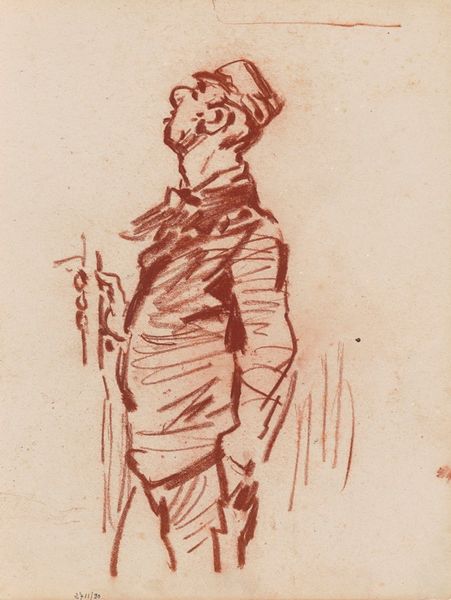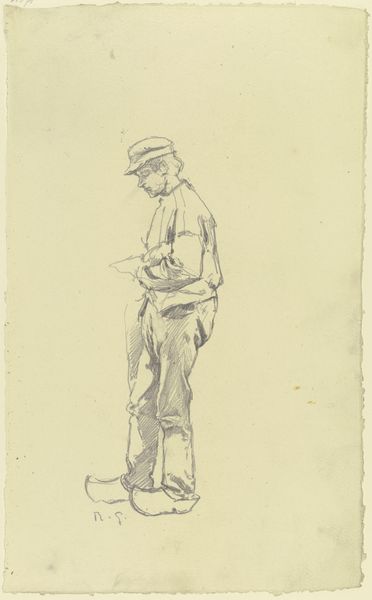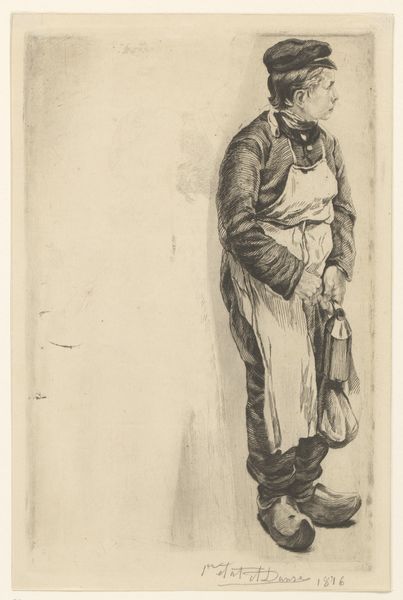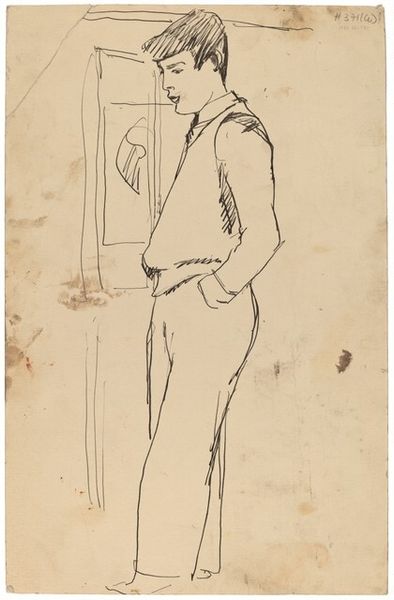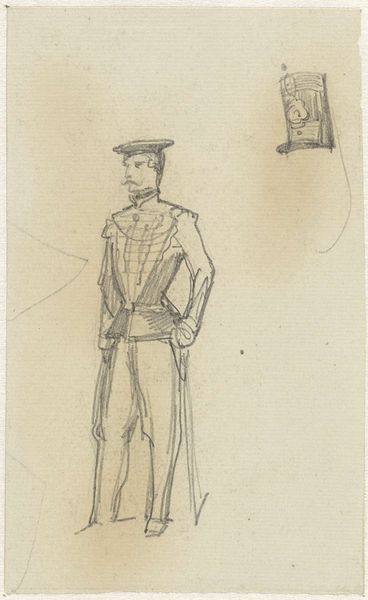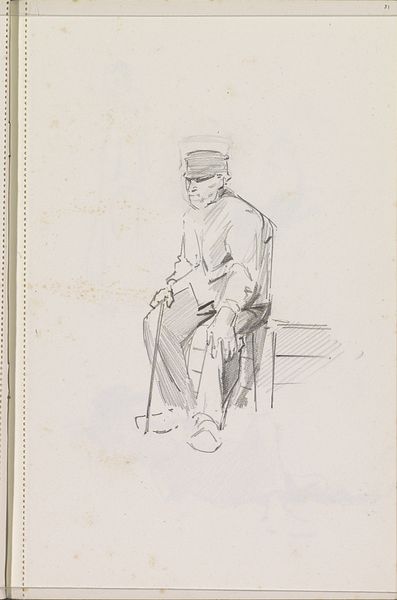
drawing, ink, pencil
#
portrait
#
drawing
#
figuration
#
ink
#
pencil
#
genre-painting
#
academic-art
Dimensions: height 294 mm, width 184 mm
Copyright: Rijks Museum: Open Domain
Editor: Here we have Heinrich Krabbé's "Military Man Sitting on a Chair," created before 1898. It's an ink and pencil drawing. There's a certain relaxed, almost nonchalant quality to this soldier sitting so casually. How do you interpret this work, especially considering its historical context? Curator: That "nonchalant quality" is precisely what makes this piece interesting. It's an image crafted during a time of heightened militarism, yet the subject is rendered with striking informality. Consider the potential social function of art depicting soldiers at this time; the intent wasn’t necessarily to reflect reality. I wonder if this piece is an exercise in humanizing the military, or perhaps something subtly subversive. What do you think about that? Editor: Humanizing, that's a great way to put it. But subversive? What do you see that points in that direction? Curator: Look at the casual posture. Instead of a stiff, upright stance we expect of military portraiture, he’s slouched, almost…bored? It subtly undermines the idea of constant vigilance and martial readiness which were powerful social expectations during periods of heightened tension.. Does this informality speak to an artist questioning those very ideals, even if only slightly? Editor: That makes me think about the intended audience, too. Would a general find this disrespectful? Or was this intended for a more civilian gaze? Curator: Precisely! That question is key. The social reception of images dictates a lot of how artists will choose to depict controversial imagery such as this. Was it destined for public display, a private collection, or even just a study for a larger work? Editor: It's fascinating how much context shapes a seemingly simple drawing. I hadn't considered that a drawing of this could represent those kind of power structures. Curator: Exactly! Art always exists within and interacts with the power dynamics of its time. It's been very enriching to review Krabbé's work through this historical lens.
Comments
No comments
Be the first to comment and join the conversation on the ultimate creative platform.
